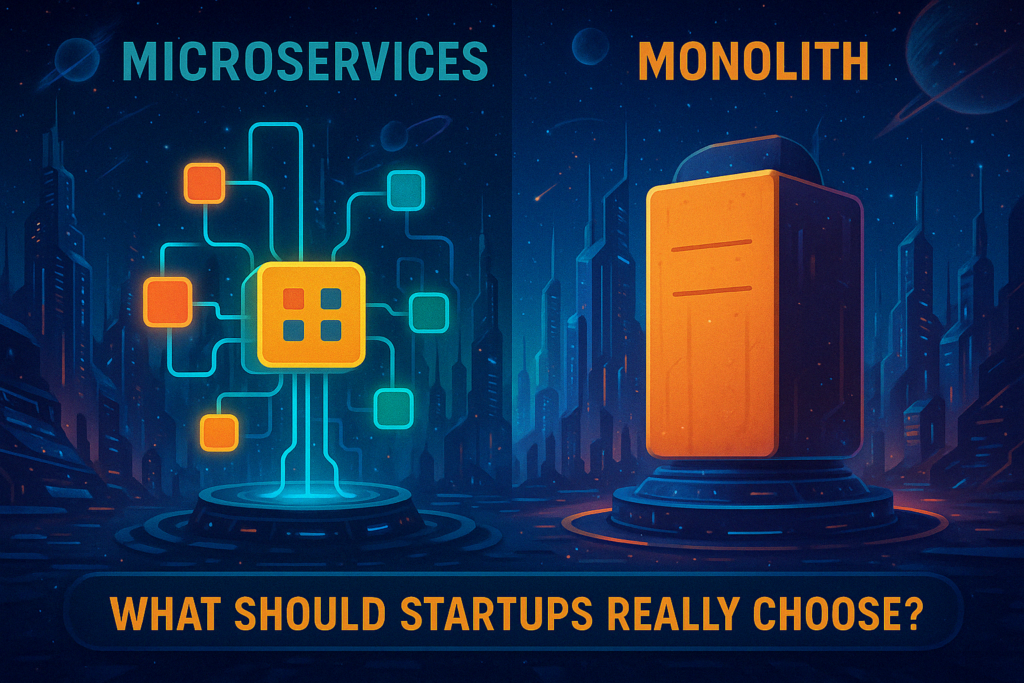
You’re ready to build your startup’s product. You’ve nailed the idea, assembled a small team, and now comes the big decision: Should you go with a monolithic architecture or embrace microservices?
This question is more than just technical—it affects your speed, scalability, cost, and even team dynamics. At Bunicode, we help early-stage startups in fintech and beyond navigate this decision every day.
Here’s a clear, no-jargon breakdown to help you decide what fits your startup best.
What Is a Monolith?
A monolithic app is built as a single, unified codebase. Everything—frontend, backend, business logic, database access—lives in one place.
Pros:
- Easier to build and deploy initially
- Simpler testing and debugging
- Fewer infrastructure requirements
Cons:
- Harder to scale specific components
- Changes in one part can affect the whole app
- Longer deployment cycles as complexity grows
What Are Microservices?
Microservices break down your app into smaller, independent services. Each service does one thing well (e.g., payments, notifications, user management) and communicates with others via APIs.
Pros:
- Easier to scale specific features
- Teams can work in parallel
- Independent deployment and rollback
Cons:
- More complex infrastructure
- Higher DevOps and monitoring needs
- Potential performance issues if not well-managed
What Should Startups Choose?
Most startups don’t need microservices right away. Here’s how to decide:
Go Monolith if:
- You’re building an MVP or V1
- You have a small team (<5 devs)
- Speed and simplicity matter most
- You want to iterate fast with tight feedback loops
Go Microservices if:
- You’re scaling fast and hitting performance limits
- You have multiple teams working on distinct features
- You’re integrating complex third-party systems
- You’re optimizing for resilience and flexibility
Hybrid Approach: The Best of Both Worlds
Start with a modular monolith. Build one codebase, but design it with the separation of concerns and domain boundaries in mind. This makes it easier to:
- Migrate pieces to microservices later
- Maintain agility during early stages
- Avoid premature complexity
At Bunicode, we often guide startups to this middle path—where the architecture can evolve as the business grows.
Real Talk: The Hidden Costs of Going Micro Too Soon
We’ve seen startups burn time and money building a microservices architecture before proving product-market fit. It’s like building a factory before validating if anyone wants your product.
Stick to simple until scaling demands otherwise.
Bunicode’s Take: Evolve, Don’t Overbuild
We help startups in fintech and MLOps design with the future in mind. Our rule of thumb?
- Start small. Deliver value fast.
- Design clean. So you can scale smoothly.
- Think long-term. But don’t build for problems you don’t have yet.
Whether you’re building your MVP in Nairobi or scaling a platform in Toronto, we help you choose the right architecture for right now.
You don’t have to choose between messy spaghetti code and over-engineered microservices. There’s a smart middle ground.
Start with clarity, build with intention, and let your architecture evolve with your startup.
Need help choosing the right structure? Let’s build it together.



